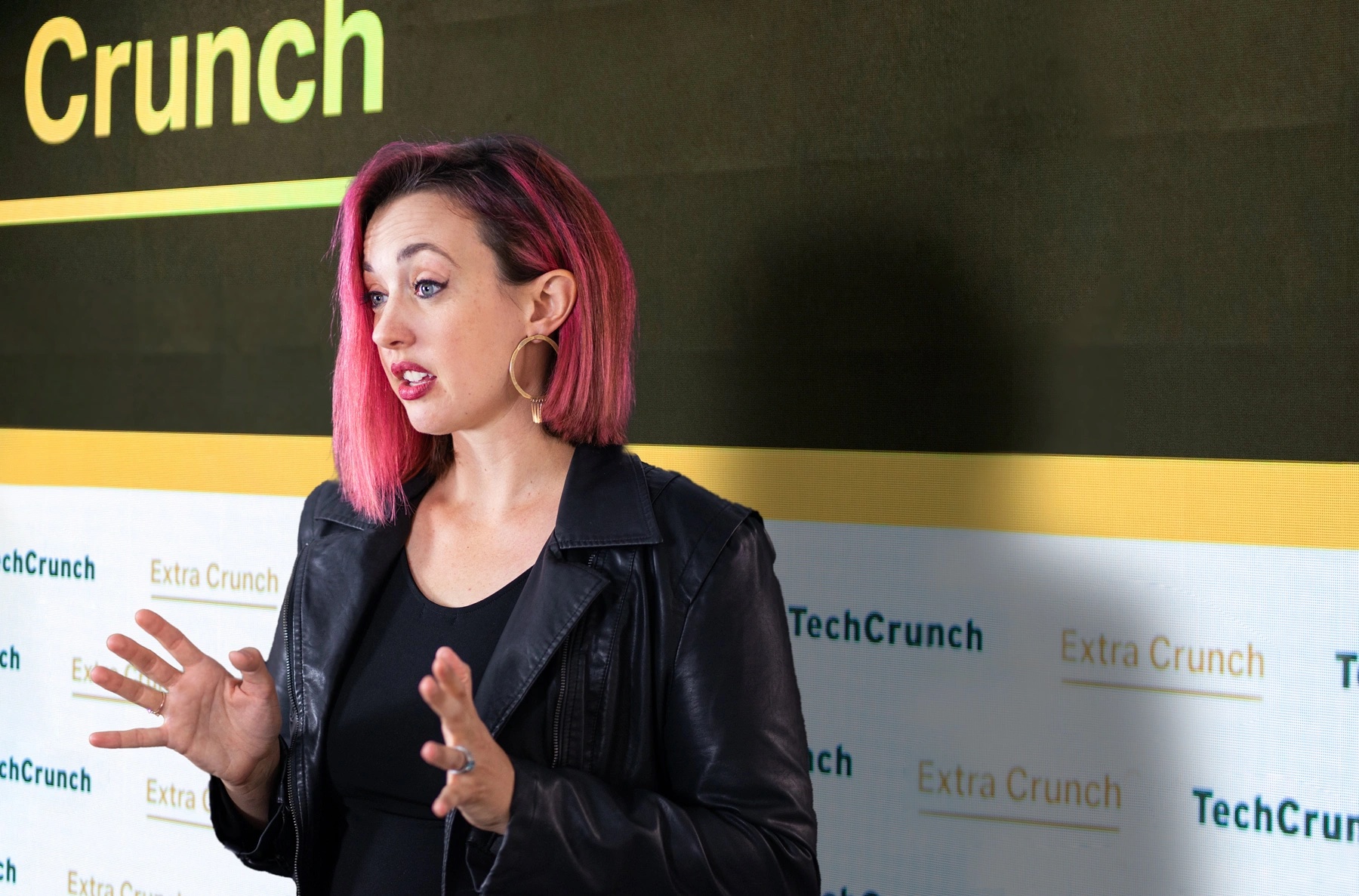Here’s another edition of “Dear Sophie,” the advice column that answers immigration-related questions about working at technology companies.
“Your questions are vital to the spread of knowledge that allows people all over the world to rise above borders and pursue their dreams,” says Sophie Alcorn, a Silicon Valley immigration attorney. “Whether you’re in people ops, a founder or seeking a job in Silicon Valley, I would love to answer your questions in my next column.”
TechCrunch+ members receive access to weekly “Dear Sophie” columns; use promo code ALCORN to purchase a one- or two-year subscription for 50% off.
Dear Sophie,
I earned my master’s degree in business analytics last year, and have been working for a company while on OPT since then.
My employer entered me in the H-1B lottery last month, but I haven’t been selected. I heard that my degree now qualifies as a STEM field, making me eligible to continue working under OPT.
How can I stay in the States?
— Astute Analyst
Dear Astute,
Appreciate you reaching out; your questions are all too familiar this time of the year. The U.S. is losing out on the world’s best and brightest talent because of the way the H-1B lottery system is currently set up, but please rest assured — you’ve got options! I shared my insights into available options for people in your situation in my recent podcast, Not Selected in the H-1B, now what?
Most of your visa options will require your employer to sponsor you, so please include your employer and the company’s immigration attorney when brainstorming and planning your next steps.
The way ahead
Keep in mind that you still can be selected to apply for an H-1B. In 2020 and 2021, U.S. Citizenship and Immigration Services (USCIS) did not receive enough qualified applications to meet the annual quota of 85,000 after the March lottery, even though employers registered a record number of H-1B candidates.
So, the USCIS conducted subsequent draws to meet the annual quota — and that will likely happen again this year.
Still, I suggest carefully monitoring your OPT expiration date and pursuing backup options.
The two-year STEM OPT extension

Image Credits: Joanna Buniak / Sophie Alcorn
Yes, you are correct that business analytics is one of the 22 STEM fields of study added in January to the STEM OPT (Optional Practical Training) program, which extends Regular OPT for an additional 24 months. If you haven’t already, I suggest you meet as soon as possible with the designated school official (DSO) at your university to find out if you are eligible for reclassification to STEM.
Each university has its own peculiarities in how the DSOs interpret U.S. immigration, what they offer and how they interpret compliance. Although I’m hearing that many DSOs have been reluctant to reclassify a degree if a student has already graduated, it’s still worth taking the time and making the effort to ask.
If you’re successful, the 24-month STEM OPT extension will give your employer two more opportunities to enter you in the annual H-1B lottery.
Specific visas for certain countries
Talent from certain countries can avail specific visas. If you’re from Australia, your employer could sponsor you for an E-3 visa, which, like the H-1B, is for individuals in a specialty occupation.
If you’re from Chile or Singapore, your employer could sponsor you for an H-1B1, which is also a specialty occupation visa. Every year, 1,400 H-1B1 visas are reserved for Chileans, and 5,400 are reserved for Singaporeans.
If you’re from Canada or Mexico, your employer could sponsor you for a TN (Treaty National) visa, which is limited to certain professions. Most of these jobs overlap with H-1B specialty occupations.
What is “extraordinary,” actually?
The expansion of the STEM fields of study was among several actions taken by the Biden administration earlier this year to attract and retain STEM talent in the United States. As part of this initiative, USCIS also made it easier for individuals with degrees and experience working in STEM fields to qualify for an O-1A extraordinary ability visa.
To get an O-1A, you’ll require an employer sponsor, and to qualify, you must demonstrate that you have received national or international acclaim, or have extraordinary ability or achievements in your field. While this may sound daunting, you don’t have to have won a Nobel Prize to qualify.
You simply must meet at least three of eight criteria for extraordinary ability in business, which can include receiving an award for excellence in your field, membership in an association that requires outstanding achievement, published articles about you or your work, and judging the work of others in your field.
Under the new, easier guidance from USCIS, awards from well-known professional associations, awards recognizing conference presentations, as well as some doctoral dissertation awards and scholarships in the STEM field now meet the first criteria. What a welcome change!
While the bar for qualifying for an O-1A is higher than for an H-1B, we have had great success obtaining O-1A visas for individuals like you who have a master’s or higher degree.
Lottery-free H-1B
The annual 85,000 cap on H-1B visas and resulting lottery applies to private employers like yours. Many employers, including government agencies, universities and nonprofits connected to universities, are exempt from the annual cap and lottery.
These employers are eligible to sponsor individuals for cap-exempt H-1B visas, which you can apply for at any time of the year. If an individual gets a cap-exempt H-1B under a program like the one offered by the Open Avenues Foundation, then a private employer can apply for a concurrent cap-exempt H-1B for that individual.
Open Avenues partners with colleges and universities to create H-1B positions for international professionals in STEM and business fields to lead university students in project work tied to a cap-subject employer. The foundation hires these professionals under a cap-exempt H-1B visa to work five hours per week in this teaching role.
Once USCIS approves that H-1B, the professional’s cap-subject employer can file for a concurrent cap-exempt H-1B. We have had great success for many candidates with options like this and more.
Keep in mind that this is a more expensive option for your employer, since they will have to pay for all government filing, legal and other fees associated with both H-1B applications.
Go for the green
Your employer could also sponsor you for a green card, including the EB-1A for extraordinary ability, the EB-2 NIW (National Interest Waiver) for individuals whose work is in the national interest, the EB-2 for professionals with an advanced degree, or the EB-3 for workers and professionals.
Alternatively, you can self-petition for an EB-1A or EB-2 NIW green card. Consider the timing of this carefully with your immigration attorney to ensure you can maintain work authorization.
The EB-1A is the fastest option after a marriage-based green card, but the EB-2 NIW has become easier to qualify for. I recommend you consult an immigration attorney if you decide to self-petition for a green card.
Stay strong. I believe in you!
— Sophie
Have a question for Sophie? Ask it here. We reserve the right to edit your submission for clarity and/or space.
The information provided in “Dear Sophie” is general information and not legal advice. For more information on the limitations of “Dear Sophie,” please view our full disclaimer. “Dear Sophie” is a federally registered trademark. You can contact Sophie directly at Alcorn Immigration Law.
Sophie’s podcast, Immigration Law for Tech Startups, is available on all major platforms. If you’d like to be a guest, she’s accepting applications!
